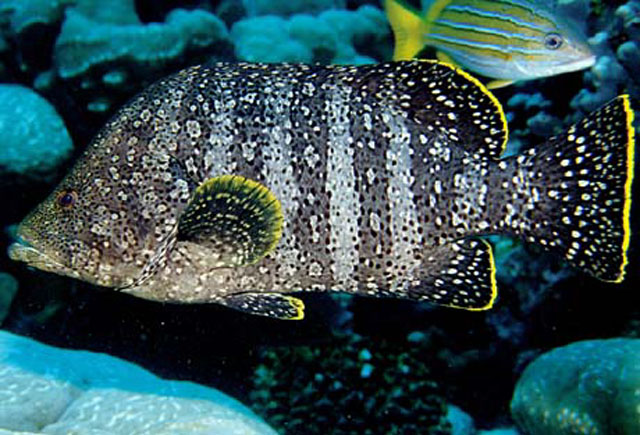| Epinephelidae (Groupers) |
| 100 cm TL (male/unsexed); max.weight: 12 kg |
|
reef-associated; marine; depth range 21 - 40 m |
| Eastern Pacific: southern California, USA to Peru, including Revillagigedo and Galapagos Islands, Cocos Island, Clipperton Island. |
|
Dorsal spines (total): 11-11; Dorsal soft rays (total): 18-20; Anal spines: 3-3; Anal soft rays: 9-9. Distinguished by the following characteristics: body depth, 2.1-2.5 in SL; dorsal profile of head is steep; eye diameter less than snout length, 5.2-8.0 in HL; short pectoral fins, length 18-26% of SL; rounded caudal fin; smooth scales, mostly covered by skin; lateral line scales 62-67 (Ref. 089707). |
| A diurnal predator that feeds on small benthic fishes and occasionally on crustaceans. Often it uses browsing herbivorous fishes as a moving blind in order to feed on the cryptic fauna disturbed by these browsers; it will also follow foraging moray eels to catch the fishes frightened from their hiding places. Small juveniles have been seen hiding among the long spines of the dark-colored sea urchin, Centrostephanus coronatus. |
|
Least Concern (LC); Date assessed: 02 June 2017 Ref. (130435)
|
| harmless |
Source and more info: www.fishbase.org. For personal, classroom, and other internal use only. Not for publication.
